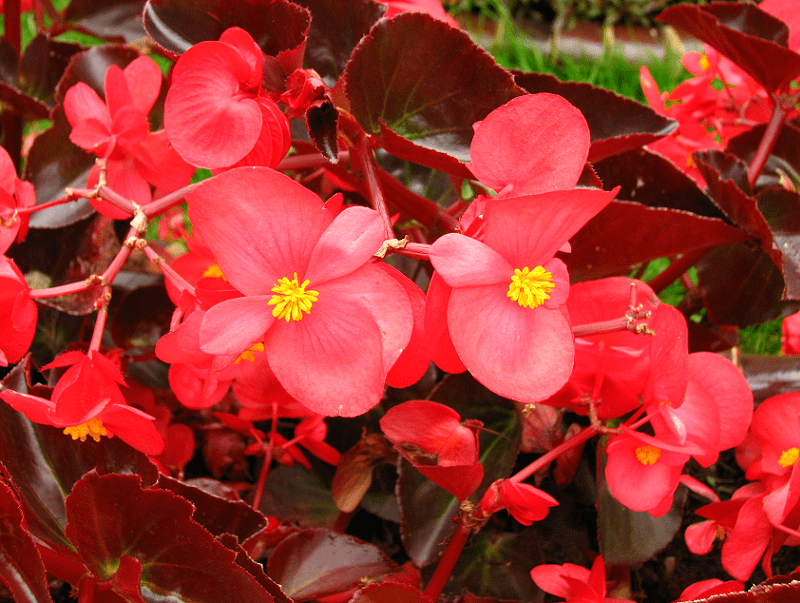Begonia Facts
- Firstly, the simple term of Begonia actually serves as the common name for any of the plant species within a certain genus. Secondly, and quite amazingly, this fascinating genus has a truly enormous number of separate species contained within it. That’s because the group presently includes more than 1,400 known varieties. Even more remain under consideration.
- In addition, all recognized varieties of this remarkable genus appear to be endemic to the same types of environments. That holds true due to the fact that each Begonia developed as native to either tropical or subtropical climates. Furthermore, this nature also helped to make them quite popular as ornamental houseplants. The majority of them do so, in fact.
- Since the term Begonia in fact applies to so many different species, conservation statuses naturally vary. Thankfully, for the moment, only a few of the various forms appear on the IUCN Red List of Threatened Species. However, all of them may be considered to be at risk in the near future. This unfortunate predicament occurs due to the ongoing effects of climate change.
Related Articles
Begonia Physical Description
Given the gigantic number of species referred to as Begonia, physical variations naturally exist. However, they obviously share certain characteristics. That’s the very reason each fits in the same group. For one, all recognized members of this evolved as terrestrial plants in nature. Additionally, depending on the species, each can develop as either small shrubs or herbs.
Additionally, most varieties of this rather beautiful flower commonly grow as upright plants, of wide-ranging sizes. Colors vary widely between forms, but most remain brilliantly colored. All recognized types of Begonia evolved as monoecious, bearing both male and female flowers separately. The leaves typically grow large and variously marked. The fruit forms a small, winged capsule in most known varieties.
- Kingdom: Plantae
- Phylum: Angiosperms
- Class: Eudicots
- Order: Cucurbitales
- Family: Begoniaceae
- Genus: Begonia
Begonia Distribution, Habitat, and Ecology
All known forms of the stunning Begonia evolved as endemic to several moist, tropical and subtropical regions. These regions also exist exclusively in the Northern Hemisphere. More specifically, these regions include wide swathes of Africa, Central America, South America, and southern Asia. However, various species of the genus have now been spread to other parts of the world by human activity.
Furthermore, in most of its native range, the flowering plants in this genus form an important part of the forest undergrowth. Species also most typically occur in regions where the soil drains well and receives copious amounts of rainfall. Nevertheless, within this range, different forms have also adapted to a wide variety of local habitats. These include forests, montane regions, and rainforests.
However, the gorgeous Begonia also holds yet another reason for its extreme popularity with humans. That’s because many varieties of this plant commonly both grow and bloom throughout the entire year. Some people in parts of the world consume a few of the species, though the tat is described as sour. In large quantities, however, this can be dangerous, since it contains small amounts of oxalic acid.
Species Sharing Its Range
Check out our other articles on 5 Incredible South American Islands, Vietnamese Mossy Frog, Giant Crystal Cave, Flamingo Tongue Snail, Jewelled Gecko, Bald Uakari, Yellow-Eyed Penguin

